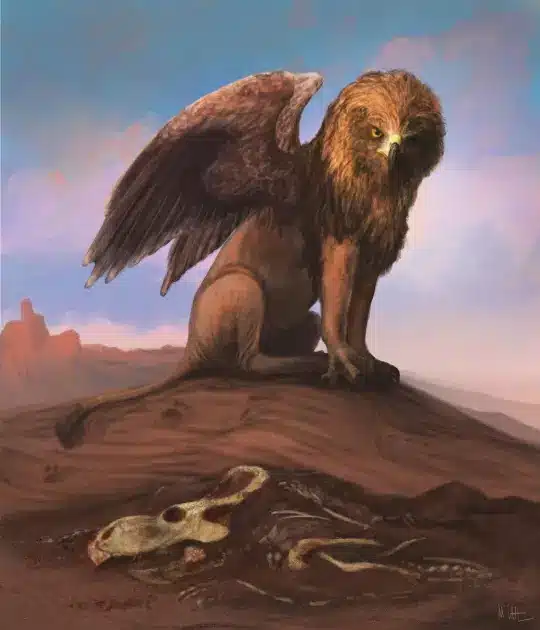Researchers from the University of Portsmouth have uncovered surprising insights into the origins of the griffin legend, linking ancient folklore with new scientific evidence. Their findings challenge long-held beliefs and open new avenues for understanding mythological creatures.
Researchers have made a surprising breakthrough in understanding the origins of the griffin legend, demonstrating how ancient folklore and scientific data coalesce to form enduring myths. For centuries, the origins of this mythical creature — a lion with the wings and head of an eagle — have fascinated both scientists and historians alike.

Image Credit: Dr. Mark Witton
The new study, published in Interdisciplinary Science Reviews, employs cutting-edge methodologies to revisit the data surrounding the griffin legend. The researchers — Mark Witton and Richard Hing, paleontologists from the University of Portsmouth — analyzed various ancient texts, artworks and archaeological finds to draw new conclusions about how these creatures captured the imaginations of people long ago.
Traditional beliefs often connected the legend to the fossilized remains of Protoceratops, a dinosaur found in the Gobi Desert. These remains, with their beaked faces and large frills, were believed to have inspired ancient stories of griffins.
“Everything about griffin origins is consistent with their traditional interpretation as imaginary beasts, just as their appearance is entirely explained by them being chimaras of big cats and raptorial birds,” Witton said in a news release. “Invoking a role for dinosaurs in griffin lore, especially species from distant lands like Protoceratops, not only introduces unnecessary complexity and inconsistencies to their origins, but also relies on interpretations and proposals that don’t withstand scrutiny,”
However, the researchers’ closer examination of folklore suggests that the legend’s origins are more complex. By integrating historical texts and recent archaeological data, the study proposes that the interplay between ancient travelers, merchants and natural discoveries played a significant role in spreading and shaping the griffin myth.
“It is important to distinguish between fossil folklore with a factual basis — that is, connections between fossils and myth evidenced by archaeological discoveries or compelling references in literature and artwork — and speculated connections based on intuition,” Hing said in the news release. “There is nothing inherently wrong with the idea that ancient peoples found dinosaur bones and incorporated them into their mythology, but we need to root such proposals in realities of history, geography and palaeontology. Otherwise, they are just speculation.”
The findings hold significant implications for both mythological studies and scientific inquiries into how legends propagate. Understanding this connection between folklore and science not only enriches our knowledge of ancient cultures but also underscores how human perceptions of natural history can evolve.
Furthermore, the study opens the door for new explorations into other mythological creatures and how their legends may have been influenced by early scientific interpretations and discoveries. The researchers aim to continue their work, mapping the intricate web of human imagination and reality.
This groundbreaking work showcases the importance of interdisciplinary collaboration in unearthing the roots of our most cherished myths. By re-evaluating traditional narratives through the lens of modern science, the study exemplifies how much more there is to discover about the legends that have shaped human history.

